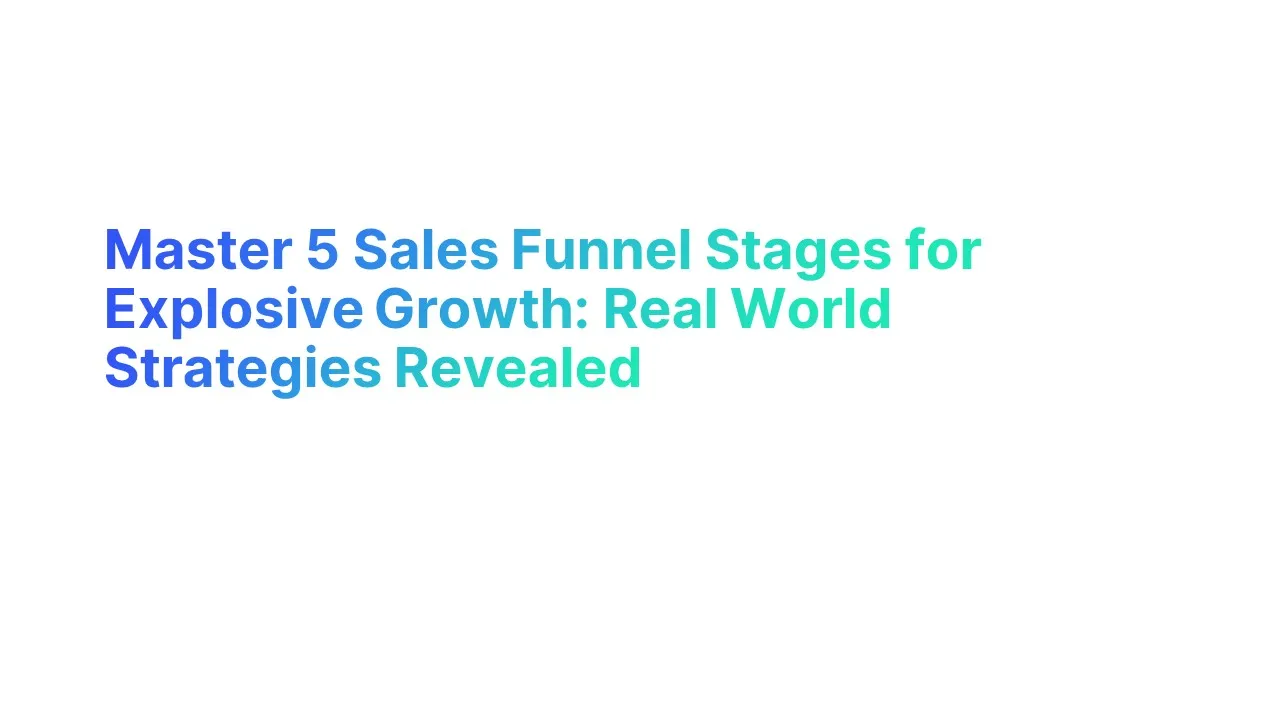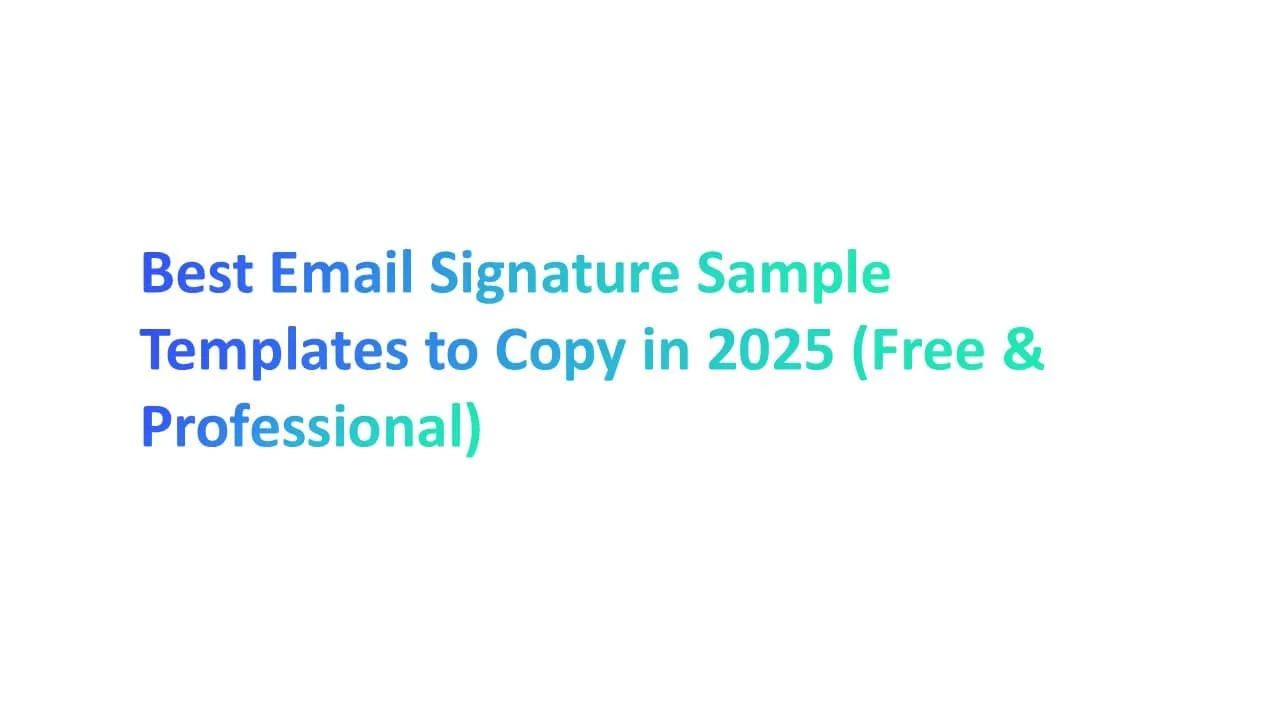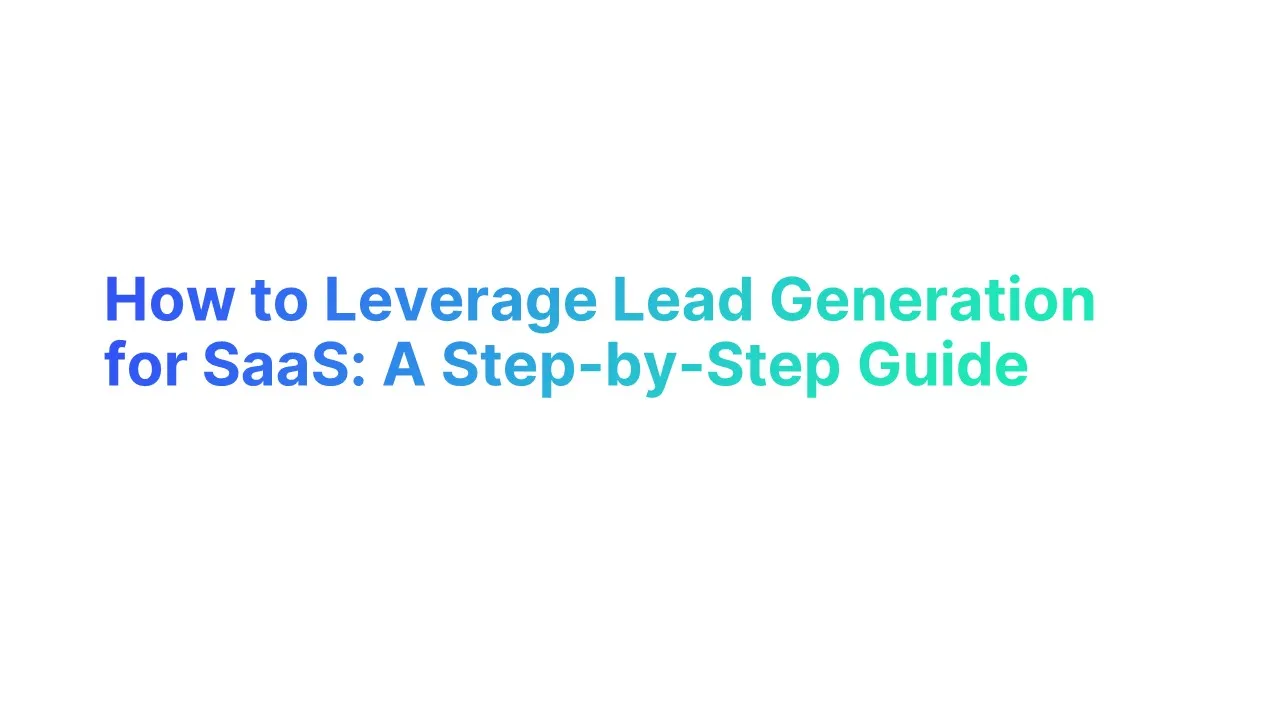Introduction to Sales Funnels

What is a Sales Funnel?
A sales funnel is a strategic model used to represent the journey potential customers go through from their first interaction with your brand to the point of making a purchase.
It's a crucial concept in marketing and sales strategy, helping businesses understand and leverage their customer interactions to maximize conversion and retention rates.
Key Aspects of a Sales Funnel:
- Lead Generation: At the top of the funnel, the primary goal is to attract as many prospects as possible. Techniques such as SEO, content marketing, and social media campaigns play a critical role here. For instance, companies using content marketing see conversion rates nearly 6 times higher than competitors who neglect it.
- Lead Nurturing: Once leads are captured, the focus shifts to nurturing them with tailored communications, often via email marketing or targeted content. Statistics show that nurtured leads make 47% larger purchases than non-nurtured leads.
- Conversion: The middle to lower stages of the funnel focus on converting leads into paying customers through various tactics like offering free trials, demonstrations, or special promotions.
Statistics on Sales Funnel
- Companies with well-defined sales management processes experience 18% more revenue growth compared to those with undefined processes.
- Businesses that integrate email marketing into their sales funnel see up to 50% higher conversion rates.
- Content marketing generates over three times as many leads as outbound marketing and costs 62% less.
- 77% of high-performing marketers use marketing automation to contribute to the success of their sales funnels.
- Nurtured leads produce, on average, a 20% increase in sales opportunities compared to non-nurtured leads.
- Companies that actively manage their sales funnel have 28% higher revenue growth.
- Social media has a 100% higher lead-to-close rate than outbound marketing methods.
Benefits of Understanding Your Sales Funnel

Understanding your sales funnel offers numerous benefits that can dramatically impact the effectiveness of your sales and marketing strategies.
- Optimized Marketing Spend: Allocate your budget more effectively by targeting advertising to stages with the best conversion rates, increasing ROI and reducing costs.
- Improved Sales Strategies: Tailor messages to the specific buying stages of your leads, enhancing targeting and increasing conversion and closing rates.
- Higher Customer Retention Rates: Create personalized experiences based on funnel insights to boost customer satisfaction, loyalty, and retention.
- Data-Driven Decisions: Use concrete data from funnel analysis to make informed adjustments to your strategies, allowing for better adaptation to market changes and customer behaviors.
- Increased Profitability: Leverage understanding of the funnel to execute timely up-selling and cross-selling, and optimize each step for higher conversion rates.
Deep Dive into Sales Funnel Stages
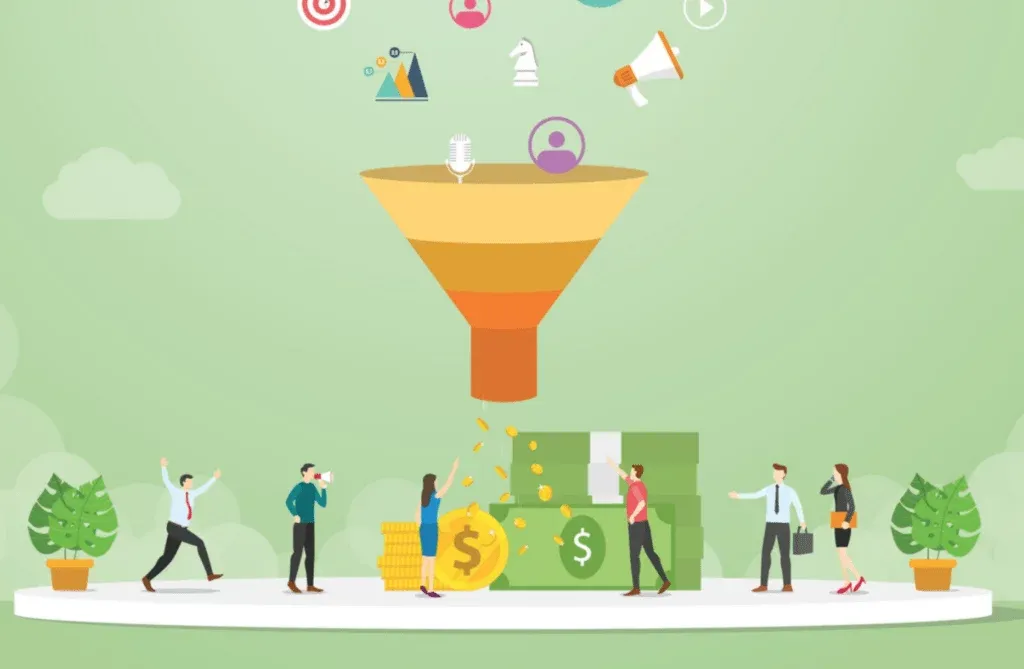
The sales funnel framework is essential for any marketer or business owner aiming to enhance their sales process and drive substantial revenue growth. Here's a deep dive into sales funnel stages
1. Awareness Stage
The Awareness Stage marks the beginning of the customer's journey through your sales funnel. This is where potential customers first become aware of your brand or product, often before they have even identified their problem or need.
Key Focus:
- Identify Target Audience: Understand who your customers are and what they need. This can be achieved through market research, analyzing sales data, and monitoring social media trends.
- Content Marketing: Deploy SEO-optimized content that addresses customer pain points and interests. Blog posts, infographics, and videos can help draw in an audience by providing valuable information.
- Brand Visibility: Increase visibility through various marketing channels. This includes PPC campaigns, social media posts, and public relations efforts to cast a wide net and capture as much attention as possible.
How to Master the Awareness Stage:
- Leverage Multiple Channels: Utilize a combination of digital marketing efforts like SEO, PPC, and social media to increase your reach. Each channel should lead potential customers back to your website or a landing page.
- Educate Your Audience: Provide insightful and engaging content that educates the audience about their pain points and your solutions. Awareness is not just about visibility but also about positioning your brand as a thought leader.
- Track and Measure: Use analytics tools to track the effectiveness of your awareness campaigns. Adjust strategies based on metrics like traffic, engagement rates, and conversion rates from this initial stage.
2. Interest Stage
Once you have captured the attention of potential customers, the Interest Stage involves keeping that attention and nurturing their interest into a desire for your products or services.
Key Focus:
- Engagement: At this stage, your content needs to engage the prospects further and foster a connection. Email marketing, newsletters, and more detailed content pieces like eBooks or webinars are effective in doing this.
- Personalization: Tailor your interactions based on the customer interactions and data collected during the Awareness Stage. Personalized emails or targeted ads can help maintain and deepen interest.
- Problem-Solving: Show how your product or service can solve problems. Detailed case studies, customer testimonials, and free samples or trials can be very persuasive.
How to Master the Interest Stage:
- Deepen Engagement: Keep the dialogue going with potential customers through regular updates, newsletters, or engaging posts on social media platforms. The goal is to make them feel valued and informed.
- Use Lead Magnets: Offer something of value in exchange for more information about the prospects. This could be a free trial, a sample, a webinar, or a detailed guide, which helps in moving them further down the funnel.
- Segment and Target: Segment your leads based on their behavior and tailor your marketing messages accordingly. This approach ensures that the leads receive relevant information that matches their particular interests and stage in the buying process.
3. Decision Stage
The Decision Stage is a critical point in the customer journey where prospective customers evaluate your offerings against competitors' options. This is where the sales process intensifies, and your marketing efforts should focus on differentiating your product or service.
Key Focus:
- Product Demonstrations and Free Trials: Offering a free trial or live demonstration can help demystify your product and showcase its value.
- Customer Testimonials and Case Studies: Sharing success stories from existing customers can significantly influence potential customers' decisions.
- Consultations with Sales Reps: Facilitating meetings or consultations between prospects and knowledgeable sales reps can address specific concerns and tailor solutions to the individual's needs.
How to Master the Decision Stage:
- Detailed Comparisons: Provide clear, detailed comparisons of your products versus competitors. Highlighting unique features or superior services can sway the decision in your favor.
- Enhance Sales Team Training: Ensure that your sales and marketing teams are well-trained to handle objections and effectively communicate the benefits of choosing your solution.
- Optimize Sales Materials: Use well-crafted sales materials that speak directly to the prospective customers’ pain points and demonstrate clear ROI.
4. Action Stage
In the Action Stage, the goal is to convert the qualified leads into paying customers. This stage is all about closing the deal and should be optimized to make the final purchasing decision as smooth and appealing as possible.
Key Focus:
- Streamlined Purchasing Process: Ensure that the sales process is as straightforward as possible. A complex or time-consuming process can deter potential customers at the last minute.
- Promotions and Incentives: Offering timely promotions or incentives can be the final nudge a potential customer needs to make a purchase.
- Follow-up Strategies: Implementing effective follow-up strategies to remind and encourage leads who have not yet made a purchase decision.
How to Master the Action Stage:
- Use a Free Sales Funnel Template: Utilize a free sales funnel template to visualize and streamline the purchasing process, ensuring all steps are clear and facilitate easy conversion.
- Empower Your Sales Team: Equip your sales reps with the tools, authority, and incentives they need to close deals effectively. Quick responses and empowerment in negotiations can make all the difference.
- Post-Purchase Support and Upsell Opportunities: After the sale, immediate follow-up for feedback, support, and potential upsell opportunities can enhance customer satisfaction and foster future sales.
5. Retention Stage
The Retention Stage is crucial for sustaining long-term business success and should be an integral part of both your sales funnel process and marketing funnel. At this point, the focus shifts from acquiring customers to keeping them engaged and satisfied over time, turning one-time buyers into loyal advocates.
Key Focus:
- Customer Satisfaction and Support: Providing excellent customer service is essential. Immediate support, easy-to-access help centers, and proactive problem-solving are key factors in retaining customers.
- Regular Communication: Keep in touch with your customers through email newsletters, updates on new offerings, or personalized messages based on their interests and previous interactions.
- Loyalty Programs: Implement loyalty programs that reward customers for their repeated business. These can include discounts, exclusive access, or special customer events.
How to Master the Retention Stage:
- Tailor the Customer Experience: Analyze customer data to understand and anticipate their needs and preferences. Tailoring the experience to individual customers can significantly increase satisfaction.
- Engage Through Content: Continuously provide valuable content that educates, entertains, or informs your customers. This could be through blogs, webinars, or social media posts that keep your brand top of mind.
- Gather Feedback and Adapt: Regularly collect customer feedback to improve products and services. Implementing changes based on customer suggestions can enhance loyalty and demonstrate that you value their input.
Sales Funnel Examples
Here are a few notable examples that demonstrate the diverse applications of sales funnels across various business contexts:
1. E-commerce Sales Funnel
- Top of the Funnel (Awareness): An e-commerce store uses targeted social media ads to reach potential customers based on their previous shopping behavior and interests.
- Middle of the Funel (Consideration): The store sends personalized email campaigns featuring products viewed but not purchased, along with special offers and customer testimonials.
- Bottom of the Funnel (Decision): Cart abandonment emails are sent reminding customers of what they left behind, coupled with a limited-time discount code to encourage a purchase.
- Post-Purchase (Retention): Follow-up emails thank customers for their purchases, offer cross-sells based on the purchase, and solicit feedback to improve services.
2. B2B Service Provider Funnel
- Top of the Funnel (Awareness): A B2B service provider offers free educational webinars and downloadable whitepapers to attract business clients.
- Middle of the Funnel (Consideration): Leads who download the whitepapers are enrolled in an email sequence that provides further information about how the service can solve their specific problems.
- Bottom of the Funnel (Decision): The sales team reaches out directly to arrange a demo and discuss tailored service packages.
- Post-Purchase (Retention): Regular check-ins and updates about new features or services ensure ongoing client satisfaction and upsell opportunities.
3. Software as a Service (SaaS) Sales Funnel
- Top of the Funnel (Awareness): The SaaS company uses content marketing, such as SEO-friendly blog posts and videos, to drive traffic to their website.
- Middle of the Funnel (Consideration): Interested visitors are encouraged to sign up for a free trial or a live demo, during which they receive detailed guidance on using the software to its full potential.
- Bottom of the Funnel (Decision): Near the end of the free trial, users receive emails highlighting the benefits of the full version, accompanied by testimonials from satisfied customers.
- Post-Purchase (Retention): Ongoing support and periodic updates are provided, along with incentives for annual renewals or upgrades to higher-tier plans.
How to Create a Successful Sales Funnel For Your Business
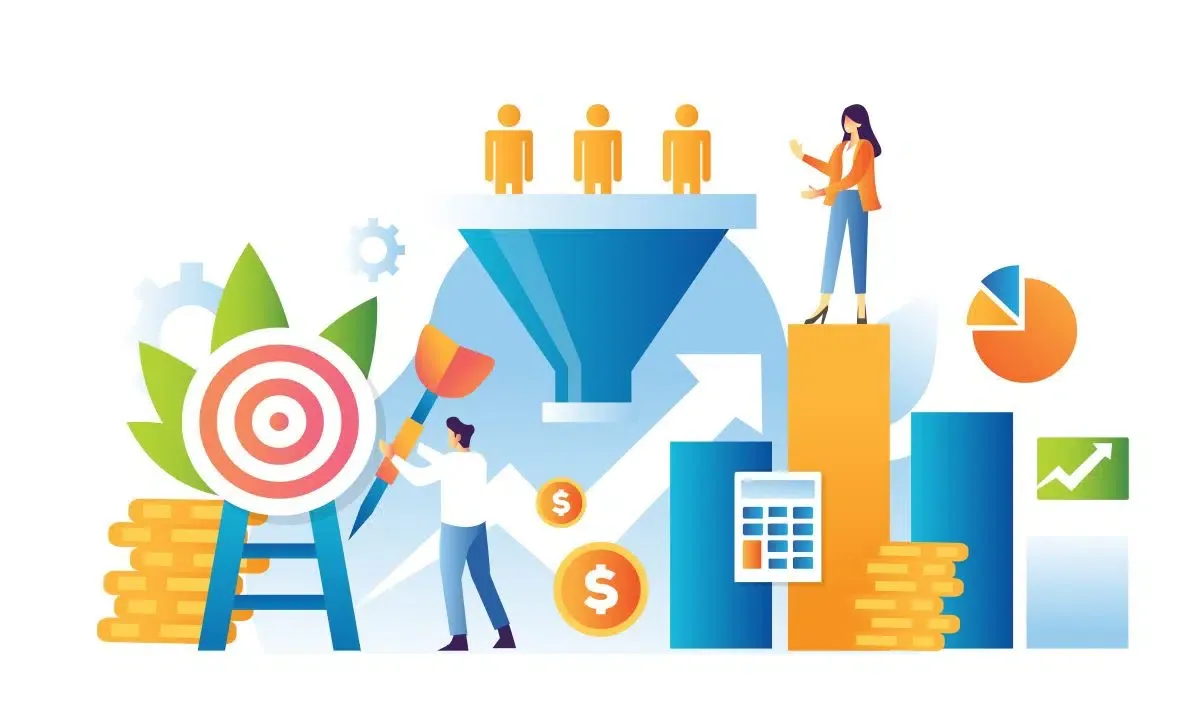
Creating a successful sales funnel is essential for guiding potential customers through the process of becoming loyal patrons of your business. Here’s a step-by-tutorial on how to construct an effective sales funnel that optimizes conversions and boosts your customer retention:
1. Define Your Target Audience
Before you start building your sales funnel, you need to clearly understand who your customers are. This involves:
- Market Research: Conduct surveys, interviews, and use analytics tools to gather data about your potential customers’ demographics, needs, and behaviors.
- Buyer Personas: Create detailed profiles of your ideal customers based on the data collected.
2. Map Out the Buyer’s Journey
Understanding the stages your potential customers go through—from becoming aware of your product to making a purchase and beyond—is crucial. Typically, this includes:
- Awareness: Potential customers become aware of your product or service.
- Interest: They show interest and learn more about it.
- Decision: They consider purchasing and compare your offerings with competitors’.
- Action: They make a purchase decision.
- Retention: They become repeat customers and brand advocates.
3. Create Engaging Content
For each stage of the buyer's journey, create content that addresses the specific needs and interests of your audience:
- Awareness: Blogs, infographics, and videos to attract attention.
- Interest: eBooks, webinars, and more detailed articles to engage deeper.
- Decision: Demonstrations, testimonials, and reviews to help make a decision.
- Action: Promotions, free trials, or limited-time offers to encourage purchase.
- Retention: Follow-up emails, support information, and loyalty programs to keep customers coming back.
4. Implement Lead Capture Mechanisms
Use effective techniques to convert visitors into leads:
- Landing Pages: Design landing pages that prompt visitors to provide their contact information in exchange for valuable resources.
- Forms: Embed forms in your content to gather lead information, such as name, email, and preferences.
5. Nurture Leads Through Email Marketing
Develop a structured email marketing campaign to nurture your leads down the funnel:
- Segmentation: Categorize your leads based on the data you’ve collected to personalize emails.
- Drip Campaigns: Send automated emails based on actions taken by the leads, guiding them to the next stages.
6. Convert Leads into Customers
Optimize the decision and action stages to maximize conversions:
- Sales Team Involvement: Have your sales team reach out personally to leads considered highly qualified.
- Clear Call-to-Action (CTA): Ensure that CTAs are clear, compelling, and lead directly to making a purchase or signing up.
7. Focus on Customer Retention
The end goal of the sales funnel isn’t just making a sale, but turning new customers into repeat buyers:
- Customer Support: Provide excellent post-purchase support to resolve issues and answer questions.
- Re-engagement Tactics: Use re-engagement strategies such as re-marketing or special offers for existing customers to encourage repeat purchases.
8. Analyze and Optimize
Regularly review the performance of your sales funnel and make necessary adjustments:
- Analytics and Feedback: Use tools to track how well each stage of your funnel is converting and gather feedback to identify areas for improvement.
- A/B Testing: Regularly test different aspects of your funnel, from emails to landing pages, to see what works best for your audience.
How to Optimize Each Stage of the Sales Funnel
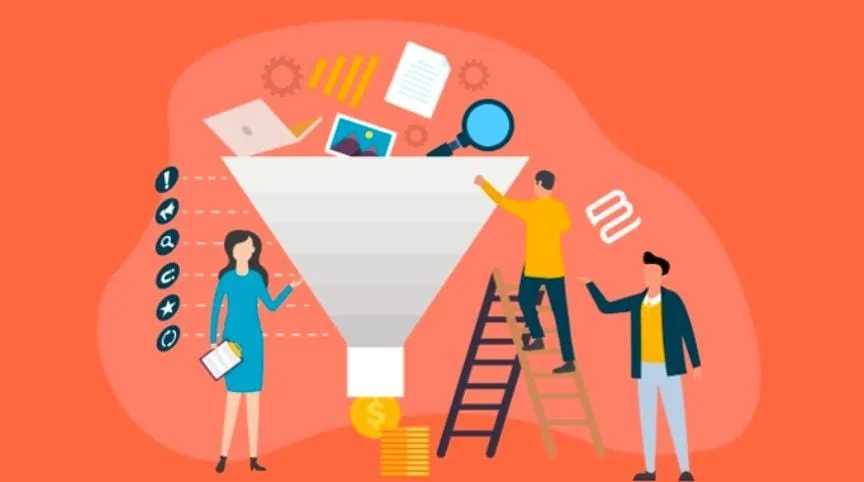
Optimizing each stage of the sales funnel is crucial for maximizing conversion rates and ensuring the smooth transition of potential customers from one stage to the next.
Here’s how you can refine each step to drive growth and improve efficiency:
1. Awareness Stage
Goal: Increase visibility and attract potential customers.
- SEO and Content Marketing: Utilize search engine optimization (SEO) to improve your visibility in search engine results and create valuable content that addresses the interests and needs of your target audience.
- Social Media Campaigns: Leverage various social media platforms to reach a broader audience. Use targeted ads to increase reach and engagement.
- Public Relations and Outreach: Engage with influencers, bloggers, and press outlets to gain broader exposure for your brand and products.
2. Interest Stage
Goal: Keep potential customers engaged and encourage them to learn more.
- Educational Content: Provide in-depth information through blogs, webinars, and eBooks that help potential customers understand the benefits of your products or services.
- Email Marketing: Start building relationships by sending informative newsletters that keep your audience engaged and informed.
- Retargeting Ads: Use retargeting strategies to bring back visitors who didn’t convert the first time, keeping your brand top of mind.
3. Decision Stage
Goal: Convince potential customers that your product or service is the best choice.
- Product Demonstrations and Free Trials: Offer demos or trials to showcase the effectiveness of your product or service
- Customer Testimonials: Share success stories and testimonials from satisfied customers to build trust and credibility.
- Comparison Content: Create content that compares your offerings with competitors, highlighting your advantages.
4. Action Stage
Goal: Convert interested prospects into paying customers.
- Streamlined Checkout Process: Ensure that the buying process is as simple and frictionless as possible. Minimize the steps needed to complete a purchase.
- Strong Call-to-Actions (CTAs): Use clear and compelling CTAs that guide users towards making a purchase or signing up.
- Promotions and Discounts: Offer timely promotions or discounts to incentivize customers to take action.
5. Retention Stage
Goal: Keep customers coming back for more.
- Follow-Up Communication: Keep in touch with customers through follow-up emails, asking for feedback, and offering support if needed.
- Loyalty Programs: Implement loyalty programs that reward repeat customers with discounts, special offers, or other perks.
- Regular Updates and Upgrades: Continuously improve your product and keep your customers informed about new features and benefits.
What is a Sales Flywheel and How Does It Differ From a Sales Funnel?
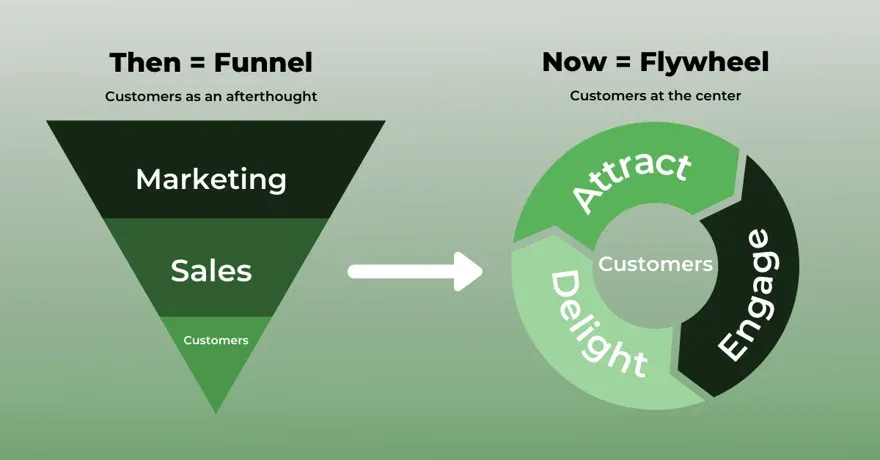
The concept of a Sales Flywheel is an approach to understanding the momentum a business gains when it prioritizes customer satisfaction throughout every stage of the customer journey.
Coined by HubSpot, the term contrasts with the traditional sales funnel by emphasizing the importance of ongoing customer engagement and satisfaction, which in turn drives referrals and repeat sales, creating a self-sustaining loop.
How Does It Differ From a Sales Funnel
1. Focus on Momentum vs. Process:
- Sales Funnel: Traditionally visualizes the customer journey as a linear process starting at the top with many prospects and narrowing down to a few conversions at the bottom.
- Sales Flywheel: Illustrates this journey as a circular process that leverages the momentum of happy customers to attract more business, emphasizing retention and word-of-mouth over simply winning new customers.
2. Customer Role:
- Sales Funnel: Customers are the output at the bottom of the funnel; once they have made a purchase, the focus typically shifts back to the top of the funnel to attract new customers.
- Sales Flywheel: Customers are the driving force; their success fuels further growth because happy customers help attract new prospects through referrals and advocacy.
3. Energy and Efficiency:
- Sales Funnel: Energy is spent at each stage of the funnel to move leads to the next stage, often with a significant drop-off at each transition point.
- Sales Flywheel: Energy is invested in improving customer experience which increases the overall momentum of the wheel, making it cheaper and more efficient as the business grows because happy customers generate more new customers.
How Does the Flywheel Work in Sales Process
The flywheel works by focusing on three core aspects: Attract, Engage, and Delight. These elements correspond to different parts of the customer journey but are interconnected to ensure continuous momentum:
1. Atretract:
- This involves drawing in customers through helpful content and interactions that establish your brand as a trusted advisor and leader. Methods include SEO, content marketing, and social media engagement.
2. Engage:
- Engagement means building relationships with prospects through personalized interactions. This includes effective communication during the sales process, tailored marketing approaches, and providing solutions that meet their unique needs and challenges.
3. Delight:
- Delighting customers involves exceeding expectations with exceptional service, support, and offerings that transform new customers into promoters. Strategies include follow-up support, customer feedback loops, and loyalty programs.
Tools for Building and Monitoring Sales Pipeline for Sales Team

Here’s a detailed look at some of the essential tools that can help you build and monitor your own sales funnel effectively:
CRM Software
1. Salesforce
Salesforce provides comprehensive CRM capabilities that help in managing your own sales funnel by tracking all sales activities, customer interactions, and history in one centralized platform.
Enhances decision-making with real-time data, improves customer relationships through better management, and scales with your business.
2. HubSpot CRM
HubSpot offers a free CRM at its core, with additional tools for marketing, sales, and customer service to manage the entire customer lifecycle.
Integrates easily with other tools, provides visibility into the entire sales funnel, and automates routine tasks, which can significantly improve team productivity.
Marketing Automation Tools
3. Marketo
Known for its strong marketing automation features, Marketo helps businesses automate their marketing campaigns and track the effectiveness of each initiative within the sales funnel.
Optimizes marketing efforts based on performance insights and helps nurture leads more effectively through targeted content.
4. Pardot by Salesforce
A Salesforce product, Pardot offers powerful marketing automation solutions designed to help sales and marketing teams create meaningful connections, generate more pipeline, and empower sales to close more deals.
Provides deep insights into marketing campaign performance and enhances lead management processes with advanced analytics.
Email Marketing Tools
5. Mailchimp
Besides its core email marketing capabilities, Mailchimp includes features for small businesses to automate their marketing and monitor the health of their own sales funnel.
Easy to use and integrates with many other SaaS platforms, allowing for streamlined funnel management and better engagement tracking.
6. Constant Contact
Offers extensive email marketing tools along with social media management capabilities.
Great for SMBs looking to manage their sales funnel without the complexity of larger platforms, offering strong support and user-friendly interfaces.
Analytics and Performance Tracking Tools
7. Google Analytics
Tracks website traffic and user interactions, which helps in understanding how well different aspects of your own sales funnel are performing.
Provides essential data that can be used to optimize marketing strategies and improve conversion rates throughout the sales funnel stages.
8. Tableau
Advanced analytics platform that can integrate data from various sources to provide comprehensive insights into the sales pipeline.
Enables deeper analysis of sales and marketing data, helping to pinpoint bottlenecks and opportunities within the sales funnel for strategic adjustments.
Project Management and Collaboration Tools
9. Trello
Trello is a visual project management tool that can be used to track stages in the sales process and manage tasks related to building and monitoring the sales funnel.
Enhances team collaboration and keeps everyone aligned on the status of different parts of the funnel.
10. Slack
While primarily a communication tool, Slack integrates with many other sales and marketing tools, making it a central hub for real-time updates and discussions about funnel performance.
Improves coordination among sales, marketing, and support teams, ensuring that all stakeholders are on the same page and can react quickly to changes in the sales funnel
Concluding Thoughts
In conclusion, mastering the five stages of the sales funnel—Awareness, Interest, Decision, Action, and Retention—is essential for driving explosive growth in your business. By understanding and implementing real-world strategies at each stage, you can optimize your marketing and sales efforts to attract more leads, nurture them effectively, convert them into loyal customers, and retain them for long-term success.
Remember, the key to a successful sales funnel lies in continuous analysis, optimization, and adapting to changing customer behaviors and market dynamics. Implement these strategies, and you'll see substantial improvements in your conversion rates and overall business growth.

